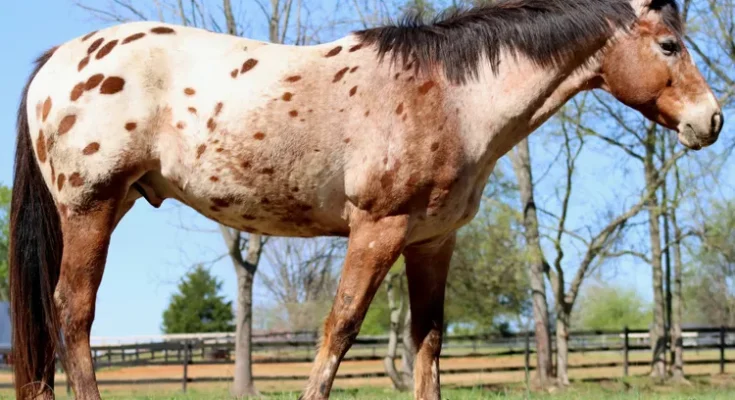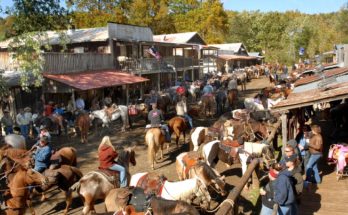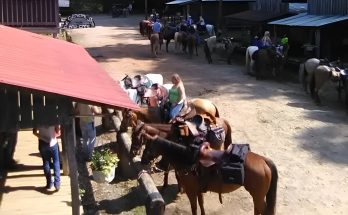10 Most Popular Horse Breeds and Types of Horses
These popular horses make reliable and gentle companions.
There are more than 350 breeds of horses and ponies, but a few stand out as popular favorites. Five particular breeds and five types of horses capture the hearts of horse lovers everywhere.
From working and racing to casual riding and equestrian competition, each horse has special qualities. These horses typically have versatile abilities and good demeanors. They can be used for pleasure riding and competition, and many of them are suitable for first-time horse owners.
Here are 10 of the most popular types of horses.
Characteristics
There are three categories of horses: ponies, light horse breeds, and heavy (draft) horse breeds. Ponies are the smallest, are great for children, and can perform various tasks. Light horse breeds can be used for riding and various equestrian sports. Heavy breeds are the biggest and strongest, so they can be used for work.
-
01of 10
American Quarter Horse
:strip_icc():format(webp)/GettyImages-97827519-56a4dba63df78cf77284fc8d.jpg)
Ken Gillespie Photography / Getty Images Embraced by beginners and professional equestrians all around the world, the American quarter horse is famous for agility, docility, and athleticism. Originally bred during the 1600s from English and Spanish thoroughbreds crossed with local breeds such as the Native American Chickasaw horse, it has the largest breed registry in the world. These horses are shining stars on the trail and in the show ring. Keeping them isn’t difficult, as they need a basic grooming routine and can be fed a diet that consists of various hays and grains, as well as treats that include fruits and vegetables.
Breed Overview
Group: Light
Height: 14 hands (56 inches) to 16 hands (64 inches)
Weight: 950 to 1,200 pounds
Physical Characteristics: Medium-boned; finely chiseled head; wide forehead; flat profile
Life Span: 25 years
-
02of 10
Arabian
:strip_icc():format(webp)/7195515982_d4e253aef3_b-1bd9eb937b994e46977a519434e9bc5f.jpg)
The Arabian has the oldest horse breed registry in the world. Its lineage goes as far back as 3000 B.C. In fact, every light horse breed, including Appaloosas, Morgans, and Andalusians, can trace their ancestry back to the Arabian. This can be a rather spirited horse, so not all beginners can handle them. But they’re also generally a loving and loyal horse. In terms of care, they may need less food compared to other breeds, and a standard grooming routine will be sufficient to keep them looking beautiful.
Breed Overview
Group: Light
Height: 14 hands (56 inches) to 16 hands (64 inches)
Weight: 800 to 1,000 pounds
Physical Characteristics: Lithe, compact body; wedge-shaped head; short back with sloping shoulders and powerful hindquarters
Life Span: 25 to 30 years
-
03of 10
Thoroughbred
:strip_icc():format(webp)/horse-and-rider-3-172284758-5755b3293df78c9b46794dea.jpg)
Debra Feinman / Getty Images Thoroughbreds are the most popular racing horse in North America. This breed is considered “hot-blooded,” which means it’s known for agility, speed, and spirit. This is a fine multipurpose horse that often has a career in other equestrian competitions besides racing, such as dressage and jumping. Or they simply live as a companion animal kept for pleasure riding. Because of their fast metabolism, you might need to feed a thoroughbred more food than other breeds, but a standard equine diet should be sufficient. Also, gentle grooming is best for these horses because their skin tends to be more sensitive.
Breed Overview
Group: Light
Height: 15 hands (60 inches) to 17 hands (68 inches)
Weight: 1,000 to 1,300 pounds
Physical Characteristics: Deep chest; lean body; long, flat muscles; delicate head
Life Span: 25 to 35 years
-
04of 10
Appaloosa
:strip_icc():format(webp)/GettyImages-83189409a-56a786743df78cf77296b6a8.jpg)
Bob Langrish / Dorling Kindersley / Getty Images The colorful spotted Appaloosa was originally developed for hunting and battle by the Nez Perce Native Americans. The breed is believed to be a descendant of wild horses mixed with the thoroughbred, American quarter horse, and Arabian. This hardy, versatile horse is great for herding, pleasure riding, long-distance trail riding, and more. Their diet can consist of hay, grass, grains, fruits, and vegetables, as well as vitamin and mineral supplements. White horses might need more frequent grooming, including baths with horse shampoo, and these horses might need sunscreen to protect against sun damage.
Breed Overview
Group: Light
Height: 14 hands (56 inches) to 16 hands (64 inches)
Weight: 950 to 1,200 pounds
Physical Characteristics: Colorful coat pattern; mottled skin; striped hooves
Life Span: 30 years
-
05of 10
Morgan
:strip_icc():format(webp)/GettyImages-136698688-39372119b5ba465ab8efb9022ca57015.jpg)
catnap72 / E+ / Getty Images The strength and elegance of the Morgan have made it a popular horse breed. As the official horse breed of Vermont, the muscle of the Morgan was used for clearing and tilling New England farms during colonial times. Today, this is a popular driving and riding horse. They’re surefooted over rough trail and dignified in the show ring. Because they’re easy keepers, they don’t need as much food as other breeds, and a standard grooming routine is all you need to keep their skin and coat clean and healthy.
Breed Overview
Group: Light
Height: 14 hands (56 inches) to 15 hands (60 inches)
Weight: 900 to 1,100 pounds
Physical Characteristics: Small ears; expressive eyes; crested neck
Life Span: 30 years
-
06of 10
Warmbloods
:strip_icc():format(webp)/GettyImages-763481781-54b649b616d1435cbc883ccf802020ff.jpg)
DEA PICTURE LIBRARY / Getty Images In equine circles, the terms “hot-blooded,” “warm-blooded,” and “cold-blooded” are used to categorize a horse’s temperament, size, and origin. Medium-size horses, including the American quarter horse, Hanoverian, Cleveland bay, and Canadian, are considered warmbloods with a European heritage. They contain a touch of the spirit you get from lithe, “hot-blooded” thoroughbreds or Arabians combined with the calm demeanor of “cold-blooded” working horses. And that balanced temperament makes for a popular horse.
-
07of 10
Ponies
:strip_icc():format(webp)/young-cowboy-on-shetland-pony-82039613-5755b2cd3df78c9b4678c338.jpg)
Ralf Nau / Getty Images Ponies are another popular category of horses. In most cases, a horse that’s fully grown at 14.2 hands (57 inches) or less is considered a pony. There are two exceptions: the miniature horse and the Icelandic horse. The plucky Shetland and elegant Welsh are popular breeds of ponies. With their short stature, they are often excellent first horses for children.
-
08of 10
Grade Horses
:strip_icc():format(webp)/horses-in-high-desert-pasture-at-trujillo-in-new-mexico-534979156-5755b24e3df78c9b4677f3c7.jpg)
Paul Souders / Getty Images Grade horse—a horse of no particular breeding—is the fancy term for the mutts of the horse world. They differ from crossbreeds because crosses are the result of known pedigreed horses that are intentionally bred. Grade horses may not have a distinguished pedigree, but they can be just as versatile and loyal as any other horse. They also generally lack many of the genetic diseases that pass through purebreds.
-
09of 10
Gaited Breeds
:strip_icc():format(webp)/tennessee-walking-horse-598257577-57bc61da3df78c8763ec97ec.jpg)
Ryan Courson Photography / Getty Images Gaited horses are a category of horses that have been selectively bred for a smooth ride or ambling gait. These horses tend to go at an intermediate speed with a four-beat movement. Breeds including the Tennessee walking horse, Kentucky mountain saddle horse, Icelandic horse, and Paso Fino are popular choices for older riders, those who have joint issues, and anyone else looking for a bounce-free ride.
-
10of 10
Draft Breeds
:strip_icc():format(webp)/horsespullingplowlg-56a4db865f9b58b7d0d98dcd.jpg)
Danita Delimont / Getty Images Draft horses are cold-blooded, heavy horses known for doing work pulling heavy loads. Historically, they were also used in battle to carry the weight of heavily armored soldiers. These horses have thick coats and manes that enable them to endure cold weather, and they tend to have tranquil temperaments.1
Draft Horse. Horse Canada.
The Clydesdale, Percheron, Shire, and Belgian are some popular examples of these gentle giants. In addition, draft horse crossbreeds can be ideal first horses, as they’re often docile and loving.



